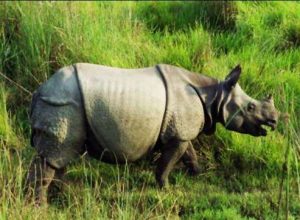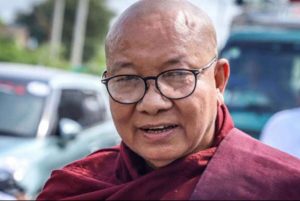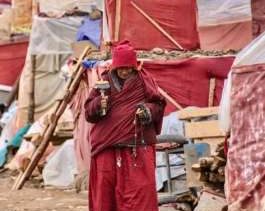
Why make a record of a dance? The oldest art in the world—rendered in caves and on cliffs—includes depictions of shamans dancing, hunting dances, ritual processions, fertility practices, and a dancing figure known as “the sorcerer.” Some of the oldest pottery, and some of the most compelling petroglyphs in the world are decorated with linked dancers. Why was dance so important to record, especially when making art was such a difficult and premium activity: highly significant, religious in the broadest sense? Here we are today, in the 21st century, with pre-historic dance records of solo dance, trance dance, shamanic dance, hunting dance, and linked group dance (this means arms and/or legs linked and joined, producing a single linked group of bodies). Such records of dances are found amid other significant artistic expressions: animals mostly, and abstract symbols. Dance appears to define sacred space; bringing a sense of order and a profound connection to the life around it.

In the late 1970s, archeologists discovered a Han dynasty tomb dated to 206 BCE. It was the tomb of an important noble. Among the treasures buried along with the man was a visual code of a Daoist health exercise system called Dao Yin. The chart is called the Dao Yin Tu. It is comprised of 44 drawn and painted figures demonstrating movements. There are concise written notes—names of the forms—near each figure. In reviewing types of dance depictions, there are two main categories: descriptive, and prescriptive. Descriptive depictions describe a dance. Prescriptive depictions show you how to do it—at least they show you how to do some aspect of it, and perhaps evoke some other aspect that defies depiction. Why was this health-sustaining exercise set considered so valuable that it was recorded and left as treasure?

In some cases, such as in preliterate societies, the dancing form was a kind of language in itself, used to convey meaning. A petroglyph from Chalcolithic India shows four dancers in a closed field. The figures communicate with visual meaning; a kind of pictograph. Cartographers call this image a pictomap. In the oracle bone script of most ancient China, the drawn figure of a dancer is the basis for the word “dance.” Meaning and image and language are united in the depiction of dance. Dance was considered significant enough to act as visual language. Consequently, dance was associated with lofty and essential matters. Based on where records of dance are found, it is clear that certain dances were considered worthy of being recorded for the future, stored with other precious knowledge sources. Dancing figures are part of the hieroglyphic language of ancient Egypt. There are also prescriptive dance depictions in ancient Egyptian murals that are not part of the hieroglyphic language.

Records of dance are abundant in historical Buddhist art, although more rare as codices, manuals, and diagrams of dance. This amazing mandala diagram for the Heruka deity solo dance at Lamayuru Monastery in Ladakh shows how integral the mandala is to all forms of Buddhist meditation and mental cultivation. The dance diagram is a mandala. Written instructions are included at junctures in the diagram.

The concept of the mandala transcends geographic boundaries, taking on profound significance in various Asian spiritual traditions. In Tibetan Buddhism, intricate sand mandalas, painstakingly created by Vajrayana monks, represent the cosmos and serve as a focal point for meditation and ritual. The act of creating and destroying these mandalas, often accompanied by chanting and rhythmic movements, embodies the impermanence of life and the cyclical nature of existence.
Cham dances themselves, are circular mandalas that unfold and fold back up in time. Monks often use chalk powder to trace large mandala patterns on the ground of the dance courtyard. Mandalas are one way that Vajrayana Buddhism stores and expresses knowledge. Dance is a form of knowledge and dance records: codices, canons, diagrams, notations—and ways of preserving this knowledge.

The connection between dance and mandala reaches a mesmerizing peak in the cham dance of Vajrayana Buddhism. Performed by monks in elaborate costumes and masks, cham is not merely a performance; it is a ritualized movement—and meditation—practice, a living mandala. The dancers’ ritual footwork, synchronized arm and hand movements, and symbolic gestures, embody the deities and cosmic forces who inhabit the mandala. The mandala is structure, practice, and record. It teaches choreography, preserves movement patterns, and helps to maintain ritual accuracy. Mandalas configure internalized movement as well as explicit pattern of bodies.

Mandalas in cham share some qualities with mazes and labyrinths in their design and control of human movement, and in their use in the cultivation of the mind and spirit. Many traditions have left records of dance and movement that reflect metaphysical understandings of their own epoch.
With the dawn of the 20th century, dance notation took a significant leap forward with the invention of Labanotation by Austro-Hungarian choreographer and draftsman Rudolf von Laban. This complex system uses symbols and lines—inspired by musical notation—to capture the nuances of human movement, from footwork and body positions to dynamics and spatial relationships. Labanotation revolutionized the way dance is preserved, transmitted, and analyzed, becoming a tool for choreographers, dancers, and historians alike.
Part Two of this series, “Writing Dance in Stone,” will feature a young New York choreographer, Mark Bankin, who used Kinetography Labanotation to record 15 Tibetan Gorshey folk dance fragments. These dances are associated with Tibetan identity, and so are the subject of certain cultural repressions. These dances are prevalent and carry the spirit of the people. Bankin was so impressed by them that he considered it essential to record the dances for the future, and so he embarked on his modern documentation of Tibetan social dancing, revealing other earlier attempts to record this important cultural expression of Tibetan identity.

Coming next month: “Writing Dance on Stone: Mark Bankin and the Gorshey Dances.”
See more
Related features from BDG
Stillness
Tantric Bodies, Tantric Dance
Nabji, Part One: Bearing Relics













